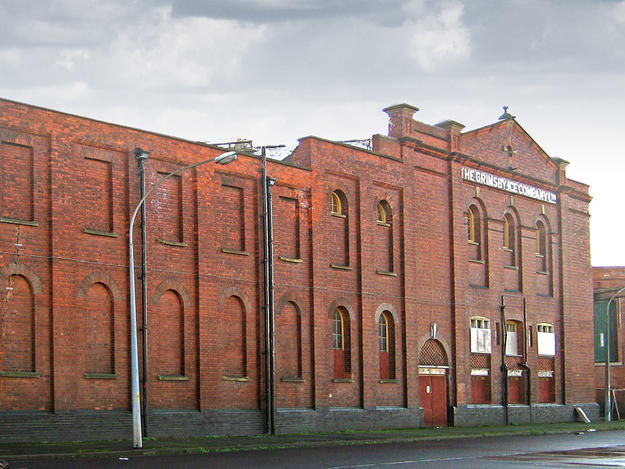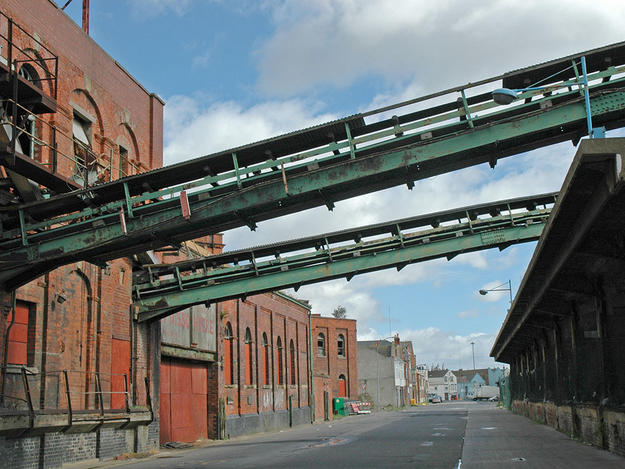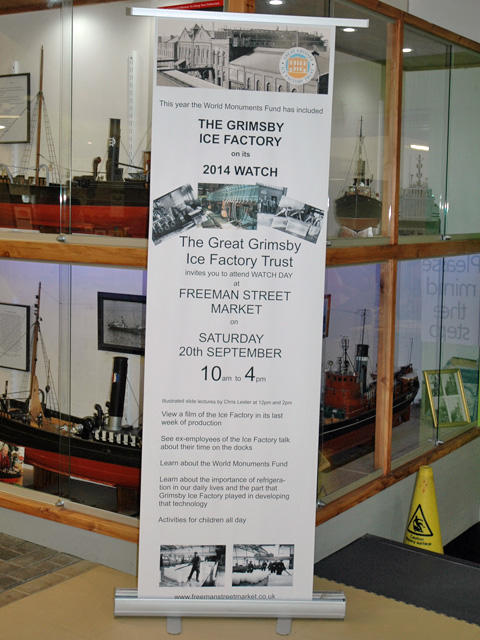Grimsby Ice Factory and Kasbah
2014 World Monuments Watch
Located on the Humber Estuary and providing strategic access to the North Sea, the port town of Grimsby has a long maritime history and once claimed the title of the world's largest fishing port. Grimsby's livelihood was tied to seafaring and trade since its establishment by the Danes in the ninth century, but gradual silting of its harbor led to a period of decline. The modern renaissance of the seaport began in the middle of the nineteenth century, catalyzed by the arrival of the railway in 1848 and the opening of the Grimsby Docks in 1852. The Grimsby Ice Factory was created to meet the growing demand for ice to supply merchants and fishing boats. Built in 1900–03, the ice factory came to produce 1,200 tons of ice per day at its peak. The surrounding precinct of docks, quays, transportation infrastructure, industrial facilities, and shops became a bustling hub of commercial activity known as the Kasbah.
Grimsby remains a major port today, but the ice factory closed in 1990 due to decreased demand. The red-brick building is an almost intact survivor of the Victorian industrial era, and it preserves century-old ice-making equipment. Following decades of abandonment, community members set up the Great Grimsby Ice Factory Trust in 2010. The founders’ goals were to adaptively reuse the ice factory and promote the revitalization of the Kasbah, which still maintains some traditional fishmonger businesses. The campaign has energized many stakeholders, but increased public and private support is needed to address the challenges posed by this sort of historic urban redevelopment.
Watch Day 2014
In September of 2014, community members participated in Watch Day for the Grimsby Ice Factory and Kasbah. Activities included a treasure hunt for children and a lecture on the history of the ice factory. Video interviews with former employees, recorded during the last days of production at the factory, were shown.
Since the Watch
In October 2017, the North East Lincolnshire Council announced the creation of a new Conservation Area for the Grimsby Kasbah. Building alterations and demolitions in this area, which does not include the Grimsby Ice Factory, will now require council approval. Prior to this announcement, in May 2016, the Council had voted to approve the demolition of four derelict dock buildings associated with Grimsby’s fishing heritage. Despite strong objections from SAVE Britain’s Heritage as well as Historic England, the Victorian Society, the Great Grimsby Ice Factory Trust, World Monuments Fund, and hundreds of people who signed a petition, the buildings were ultimately demolished. According to plans announced at the time, the buildings will be replaced by facilities that will support the growing offshore wind industry.




